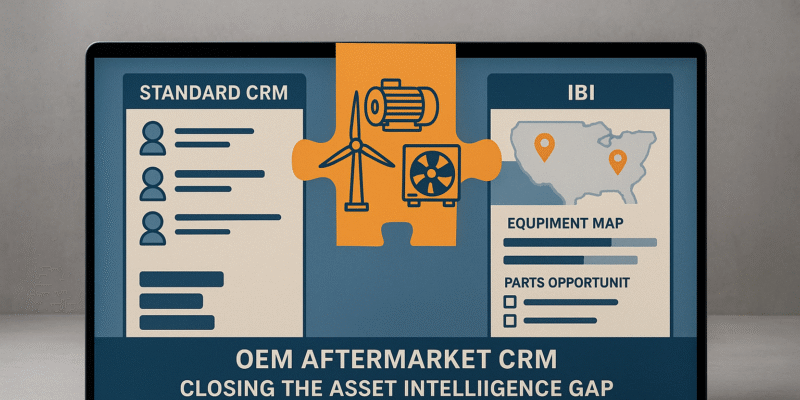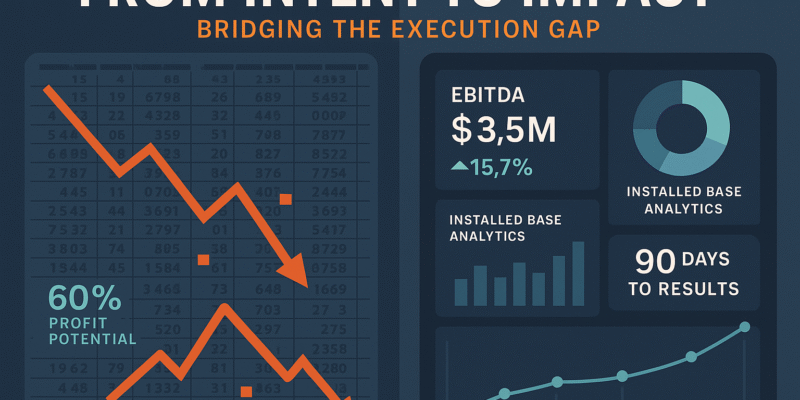Data Engineering is central to building and maintaining effective installed base management systems. The process involves collecting, integrating, and organizing data from various sources to provide a comprehensive view of assets, operations, and service activities. This article examines the technical challenges and approaches to Data Engineering in the context of installed base management, focusing on practical solutions without referencing specific organizations or individuals.
The Role of Data Engineering in Installed Base Management
Data Engineering provides essential context to operational data, transforming isolated records into actionable insights. When data from operational systems, such as equipment performance feeds from multiple sites, is integrated with enterprise asset records, organizations can:
- Identify when equipment replacements are necessary, supporting proactive maintenance.
- Develop analytical tools to predict asset performance and identify business opportunities.
- Equip field teams with detailed site histories, including asset status, transaction records, and maintenance activities.
- Enable service teams to quickly access bills of materials and service records using unique asset identifiers, streamlining support.
Technical Complexities in Data Engineering
Integrating Disparate Data Sources
Installed base data often originates from multiple internal systems, such as order management and project tracking platforms. These sources may use different structures and levels of detail. For example, operational data might be organized by production lines or plant sections, while enterprise systems track individual equipment. Aligning these hierarchies requires careful mapping and, in some cases, the introduction of custom fields to link related data.
Defining and Managing Hierarchies
A robust data model places the physical location at the center, associating each asset and project with a specific site. Defining parent-child relationships, such as which components belong to which equipment, is a common challenge. Often, these links are missing and must be established through additional data inputs or manual definition.
Ensuring Data Uniqueness and Deduplication
Several issues can arise in ensuring data uniqueness:
| Area | Challenge |
| Locations | Identical addresses may appear under different customer names or identifiers due to ownership changes. Establishing a unique location requires agreement on key attributes such as name, state, and zip code. |
| Order Data | A single order number may have multiple lines, with variations in price, currency, or shipment date, leading to duplicate records. |
| Assets/Equipment | Serial numbers are ideal unique identifiers but are often inconsistently tracked or stored in unstructured fields. |
| Aftermarket Parts | Replacement parts may not be linked to the original equipment’s serial number, complicating traceability. |
Integrating Service Contracts
Service contracts present additional challenges. They may not reference specific asset serial numbers and often use different naming conventions than asset records. As a result, contracts may only be linkable by contract ID, shipping location, or product line rather than by asset.
Approaches and Best Practices
Flexible Data Models
A flexible data model centers on the asset, linking it to locations and projects. The ability to add numerous custom attributes to assets and projects allows organizations to capture relationships that may not be present in source data.
Automated Data Cleaning and Enrichment
Automated processes can standardize addresses, correct misspellings, and cluster variations in customer names. For locations with multiple identifiers, systems can generate consolidated outputs for review, ensuring agreement on unique addresses.
Duplicate Handling
Data profiling tools identify duplicate records based on defined uniqueness keys. Aggregation logic – such as converting prices to a base currency – can resolve duplicates, but long-term integrity is best achieved by correcting issues at the source.
Flexible Asset Identification
When serial numbers are inconsistent or missing, alternative identifiers such as material IDs or concatenated fields (order number, line number, invoice number) can be used to create unique asset records. Bulk update capabilities allow organizations to refine data as processes improve.
Hierarchy Visualization
Platforms that support visualization of equipment hierarchies enable users to explore parent-child relationships, provided these are defined in the ingested data.
Managing Service Contracts
If direct asset linkage is not possible, contracts can be associated with locations and product lines. Custom fields accommodate contract-specific material names, and platforms may support attachments or links to related documentation.
Iterative Implementation and the Role of Entytle
A phased approach, starting with limited integrations and gradually increasing complexity, allows for faster validation and continuous improvement. Solutions like those offered by Entytle are designed to support this iterative process. Entytle’s platform provides flexibility in data modeling, automated data cleaning, and robust tools for deduplication and asset identification. By enabling mass updates and supporting custom attributes, Entytle allows organizations to adapt their installed base data management as their processes mature and data quality improves1.
Regular communication and agreement on data logic and deduplication rules are critical for stakeholder alignment. Entytle’s collaborative features facilitate ongoing governance and help ensure that all parties remain aligned as data integration efforts evolve1.
Data Engineering for installed base management is a technically demanding process that requires careful integration of diverse data sources, rigorous deduplication, and flexible modeling. By adopting structured approaches and leveraging automation, supported by platforms like Entytle, organizations can transform raw operational data into a valuable asset for service, sales, and strategic planning






